![PEK Solo : Semantic Notions [3 CDs] (Evil Clown) PEK Solo : Semantic Notions [3 CDs] (Evil Clown)](https://www.teuthida.com/productImages/misc4/30799.jpg)
A mammoth undertaking by Boston multi-instrumentalist David Peck, 3 CDs of studio improvisations about language, one part per CD, performed on a vast array of reeds, percussive instruments and unusual sound sources, with drummer Yuri Zbitnoff joining for intermediate mixes, resulting in a multi-layered and unique sonic universe of depth and dexterity.
In Stock
Quantity in Basket: None
Log In to use our Wish List
Shipping Weight: 5.00 units
EU & UK Customers:
Discogs.com can handle your VAT payments
So please order through Discogs
Sample The Album:
David Peck (PEK)-clarinets (piccolo, B flat, G Albert, alto, bass, contralto, contrabass) ; saxophones (sopranino, soprano, alto, tenor, baritone and bass) ; double reeds (oboe, English horn, bassoon, contrabassoon, bass tromboon, dulzaina, tarota, mussette, guanzis, nadaswaram, shenai) ; flutes (C flute & alto flute, Hulusis, 3 & 5 hole Russian flutes, Christmas flute, large bamboo flute, wood flutes, dizi and bass dizi) ; free reed aerophones (sheng, melodica, accordion, concertina, chromatic harmonica) ; other winds (goat horn, bass recorder, penny whistle, bass and alto ocarinas, wind siren, kazoo, fog horn, game calls) ; wood percussion (xylophone, log drum, wood blocks, temple blocks, rachet, seed pod rattle, castanets, rattles, dan mo, claves) ; metal percussion (plate gong, gongs, brontosaurus & tank bells, crotales, Tibetan bowls and bells, finger cymbal, bell tree, Englephone, trine, flexatone, cow bells, hand chimes, orchestral chimes, chimes) ; skins (daiko, tabla, ocean drum, talking drum) ; strings ([d]ronin, electric upright bass, electic cello, electric bass, guyzheng, soprano & bass Nagoya Harps) ; electronics (mallet kat wih moog subsequent, linnstrument with novation peak and prophet, korg ms 20, daxophone, Ableton premixes, digital delay, theremin with moogerfooger) ; other (aquasonic, spring tube, sruti box, voice)
Yuri Zbitnoff-drums, xylophone, wood percussion
Click an artist name above to see in-stock items for that artist.
Label: Evil Clown
Catalog ID: 9261
Squidco Product Code: 30799
Format: 3 CDRs
Condition: New
Released: 2021
Country: USA
Packaging: Cardboard Gatefold 3 Panels
Recorded at Evil Clown Headquarters, in Waltham, MA, during November and December, 2020, and January, 2021.
"Every once in a while, there is a break in the crazy schedule here at Evil Clown and I have some time to do a solo album. Our grand olde pal, the Corona Virus has provided such a break in spades.... At the beginning of the 2020, it appeared that the year would be our busiest yet... We did a buna
"Every once in a while, there is a break in the crazy schedule here at Evil Clown and I have some time to do a solo album. Our grand olde pal, the Corona Virus has provided such a break in spades.... At the beginning of the 2020, it appeared that the year would be our busiest yet... We did a bunch of albums in January, February and the first weeks of March, and then I was forced to cancel a bunch of wonderful performances scheduled for the months that followed. So, I caught up all my old business: web site, social media, distribution, and the other non-musical activity required to drive the enterprise. Then I took a month off... my biggest rest since I started up in 2015 after my long hiatus. In mid-May I started up again, conceiving some new means of producing some of the enormous output normally achieved by Evil Clown. In the Fall I did a huge series of solo works along with a few Metal Chaos Ensemble sets.
Now entering the second calendar year to be affected by the Stupid Virus, I really miss playing with others... For obvious reasons, I have been producing a lot more PEK Solo albums than I do typically. I conceived a structural schema for producing solo works while we wait for the virus to be over. As with larger ensemble Evil Clown sessions, the planning involves selecting sound resources from the massive Evil Clown Arsenal and setting up the studio with these instruments to allow rapid changes in instrumentation and therefore in sonority. This system provides a framework to create solo works that are sufficiently different from each other that I can continue to produce new work at something close to my usual rate even while I can't perform with others.
The PEK Solo albums fall into four categories:1) One continuous track (no overdubbing) of PEK playing one or many instruments with or without signal processing.2) One continuous track of PEK playing one or many instruments with a prerecorded mix of samples drawn from the Evil Clown Catalog or specially recorded at Evil Clown Headquarters. Solo albums from before 2020 fall into the categories 1 & 2.3) A Quartet of PEKs - Four continuous tracks of one PEK each playing many instruments on each pass. Three of these albums, Schematic Abstractions for the Clarinet Family, Fixed Intentions for the Saxophone Family, and Completeness for Flutes and Double Reeds use very focused palettes. Other Quartet of PEKs releases use broader palettes comprised of woodwinds, percussion, electronics, and strings.4) An Orchestra of PEKs - Many tracks of PEKs performing on a broad section of the Arsenal. The last of these, Some Truths are Known, is a mammoth 4-hour studio construction / composition in 3 eighty-minute movements. I list 110 instruments in the notes for this album....
The current session, Semantic Notions, is a category 4 set. Like Some Truths Are Known, it is a massive 4-hour work in three 80-minute movements. I'm really enjoying these very large format works which remind me in some ways of my Frame Notation Scores for the Leap of Faith Orchestra. The methods are very different, but the goal is the same: Erect a formal structure that controls a work's development by applying composed structures to wholly improvised content.The compositional element is a methodology, an algorithm. I create intermediate mixes in Ableton from samples of the Evil Clown Catalog, or by recording specially at Evil Clown Headquarters. For Semantic Notions some of the intermediate mixes include:
• Three Quartet of PEKs sessions listed above (Schematic Abstractions, Fixed Intentions, Completeness)• 16 PEK mixes of each of these (4 tracks of each at various pitch/time transformations)• 48 PEK mix of the above three 16 PEK mixes• Metal Chaos Ensemble - Null Hypothesis (with Yuri Zbitnov)• Metal Chaos Ensemble - Journey to Skull Island for wooden percussion (3 tracks of duets with Yuri Zbitnov and PEK)• Thick Wood mix made from multiple transformed copies of Journey to Skull Island• Sruti box mix• Hand chimes mix
Using the above and other sources, I create an approximately 78-minute mix (length of a full CD) of varying sonority and density with silent gaps of 3 to 5 minutes. Then I set up the studio with a bunch of string, percussion and electronic instruments. I record two tracks of the entire duration of the work where I improvise textural support tracks. Then I record one track of the entire duration with the room full of horns and other solo instruments. The performance of these 3 final tracks is very similar in many ways to more conventional real-time improvisation in an ensemble with a few key differences:
• The general shape and color of the accompaniment tracks is known in advance.• Instrument selection for some sections is decided in advance (particularly for the openings and conclusions)• The dynamic profiles (wave forms) of the previously recorded tracks and pre-mixes are visible in the recording software, providing a clear picture over time of the earlier tracks and precise information on transition points.• My improvisation language features phrasing as a principle element. Improvising with accompaniment performed by myself means that I do not need to deduce in real time the phrasing of the other players. It is possible to match my own phrases with near total precision.
Semantic Notions transforms through a huge set of sonorities ranging from sparse and quiet with one or a few instruments to dense and very chaotic thick sections and various levels of in-between. The huge instrumentation allows very different sonorities not only for the thinner sections but even for the dense sections. Hopefully, I achieve my aesthetic goal of telling a compelling story with sufficiently different overall character over the duration of the composition.
Until the stupid virus is over and more normal interactions are possible with other people, I will continue to create PEK Solo new works using the four concepts listed above and maybe some new ones. There also may be some small group Leap of Faith and Metal Chaos Ensemble sets. Evil Clown will resume its normal routines when vaccination is widespread, and it is safe to do so.
As usual, the chaos of the universe throws out problems which require our attention. Expression must be expressed. Music must be made. The chaos of the universe demands it."-PEK
ch of albums in January, February and the first weeks of March, and then I was forced to cancel a bunch of wonderful performances scheduled for the months that followed. So, I caught up all my old business: web site, social media, distribution, and the other non-musical activity required to drive the enterprise. Then I took a month off... my biggest rest since I started up in 2015 after my long hiatus. In mid-May I started up again, conceiving some new means of producing some of the enormous output normally achieved by Evil Clown. In the Fall I did a huge series of solo works along with a few Metal Chaos Ensemble sets.Now entering the second calendar year to be affected by the Stupid Virus, I really miss playing with others... For obvious reasons, I have been producing a lot more PEK Solo albums than I do typically. I conceived a structural schema for producing solo works while we wait for the virus to be over. As with larger ensemble Evil Clown sessions, the planning involves selecting sound resources from the massive Evil Clown Arsenal and setting up the studio with these instruments to allow rapid changes in instrumentation and therefore in sonority. This system provides a framework to create solo works that are sufficiently different from each other that I can continue to produce new work at something close to my usual rate even while I can't perform with others.
The PEK Solo albums fall into four categories.
1) One continuous track (no overdubbing) of PEK playing one or many instruments with or without signal processing.
2) One continuous track of PEK playing one or many instruments with a prerecorded mix of samples drawn from the Evil Clown Catalog or specially recorded at Evil Clown Headquarters. Solo albums from before 2020 fall into the categories 1 & 2.
3) A Quartet of PEKs - Four continuous tracks of one PEK each playing many instruments on each pass. Three of these albums, Schematic Abstractions for the Clarinet Family, Fixed Intentions for the Saxophone Family, and Completeness for Flutes and Double Reeds use very focused palettes. Other Quartet of PEKs releases use broader palettes comprised of woodwinds, percussion, electronics, and strings.
4) An Orchestra of PEKs - Many tracks of PEKs performing on a broad section of the Arsenal. The last of these, Some Truths are Known, is a mammoth 4-hour studio construction / composition in 3 eighty-minute movements. I list 110 instruments in the notes for this album....
The current session, Semantic Notions, is a category 4 set. Like Some Truths Are Known, it is a massive 4-hour work in three 80-minute movements. I'm really enjoying these very large format works which remind me in some ways of my Frame Notation Scores for the Leap of Faith Orchestra. The methods are very different, but the goal is the same: Erect a formal structure that controls a work's development by applying composed structures to wholly improvised content.
The compositional element is a methodology, an algorithm. I create intermediate mixes in Ableton from samples of the Evil Clown Catalog, or by recording specially at Evil Clown Headquarters. For Semantic Notions some of the intermediate mixes include.
• Three Quartet of PEKs sessions listed above (Schematic Abstractions, Fixed Intentions, Completeness.
• 16 PEK mixes of each of these (4 tracks of each at various pitch/time transformations.
• 48 PEK mix of the above three 16 PEK mixe.
• Metal Chaos Ensemble - Null Hypothesis (with Yuri Zbitnov.
• Metal Chaos Ensemble - Journey to Skull Island for wooden percussion (3 tracks of duets with Yuri Zbitnov and PEK.
• Thick Wood mix made from multiple transformed copies of Journey to Skull Islan.
• Sruti box mi.
• Hand chimes mi.
Using the above and other sources, I create an approximately 78-minute mix (length of a full CD) of varying sonority and density with silent gaps of 3 to 5 minutes. Then I set up the studio with a bunch of string, percussion and electronic instruments. I record two tracks of the entire duration of the work where I improvise textural support tracks. Then I record one track of the entire duration with the room full of horns and other solo instruments. The performance of these 3 final tracks is very similar in many ways to more conventional real-time improvisation in an ensemble with a few key differences.
• The general shape and color of the accompaniment tracks is known in advance.
• Instrument selection for some sections is decided in advance (particularly for the openings and conclusions.
• The dynamic profiles (wave forms) of the previously recorded tracks and pre-mixes are visible in the recording software, providing a clear picture over time of the earlier tracks and precise information on transition points.
• My improvisation language features phrasing as a principle element. Improvising with accompaniment performed by myself means that I do not need to deduce in real time the phrasing of the other players. It is possible to match my own phrases with near total precision.
Semantic Notions transforms through a huge set of sonorities ranging from sparse and quiet with one or a few instruments to dense and very chaotic thick sections and various levels of in-between. The huge instrumentation allows very different sonorities not only for the thinner sections but even for the dense sections. Hopefully, I achieve my aesthetic goal of telling a compelling story with sufficiently different overall character over the duration of the composition.
Until the stupid virus is over and more normal interactions are possible with other people, I will continue to create PEK Solo new works using the four concepts listed above and maybe some new ones. There also may be some small group Leap of Faith and Metal Chaos Ensemble sets. Evil Clown will resume its normal routines when vaccination is widespread, and it is safe to do so.
As usual, the chaos of the universe throws out problems which require our attention. Expression must be expressed. Music must be made. The chaos of the universe demands it."-PEK, Evil Clown
Artist Biographies
• Show Bio for David Peck (PEK) "PEK (aka David Peck) is a multi-instrument improviser who plays all kinds of instruments including saxophones, clarinets, double reeds, percussion, electronics and auxiliary sound making devices of all kinds. PEK was born in 1964 and started playing clarinet and piano in elementary school. In 7th grade he started saxophones, first on alto, then switching to tenor in high school. He spent 10 years playing in rock bands and studying classical and jazz saxophone with Kurt Heisig in the San Jose CA area before moving to Boston in 1989 to attend Berklee where he studied performance with George Garzone. While Berklee was an excellent place to study harmony, voice training and other important aspects of a conventional formal music training course of study, it was not a very good environment for learning contemporary (or pure) improvisation (apart from his work with George). PEK did find, however, that Boston had a thriving improvisation scene, and it was here that he developed his mature pure improvisation language. During the 90s, PEK performed with many notable improvisers including Masashi Harada, Glynis Lomon, William Parker, Laurence Cooke, Eric Zinman, Glenn Spearman, Raqib Hassan, Charlie Kohlhase, Steve Norton, Keith Hedger, Mark McGrain, Sydney Smart, Matt Samolis, Martha Ritchey, Larry Roland, Dennis Warren, Yuri Zbitnov, Craig Schildhauer, Keith Fullerton Whitman, Leslie Ross, Rob Bethel, Wayne Rogers, Eric Rosenthal, Taylor Ho Bynum, Tatsuya Nakatani, James Coleman, B'hob Rainey and George Garzone. PEK met cellist Glynis Lomon when they played together in the Masashi Harada Sextet which existed between 1990 and 1992. They developed a deep musical connection which they continued following the MHS; first with the Leaping Water Trio for a few years and then with the first version of Leap of Faith in 1994. Leap of Faith was very active in Boston from that time until 2001 and went through a series of several core ensembles which always included both PEK and Glynis. Other key Leap of Faith core members during this period were Mark McGrain (trombone), Craig Schildhauer (double bass), Sydney Smart (drums), Yuri Zbitnov (drums) and James Coleman (theremin). Leap of Faith was always a very modular unit with constantly shifting personnel and many different guests. The early Leap of Faith period concluded in 2001 with a dual bill at an excellent room at MIT called Killian Hall with George Garzone's seminal trio the Fringe. At this time, PEK changed careers for his day gig, returning to college for a computer science degree and beginning to work in the structural engineering industry at Simpson Gumpertz & Heger. He became far too busy to continue the heavy music schedule, and preferring not to do music casually, he entered a long musically dormant period. Flash forward to early 2014. PEK was a regular mail order customer of Downtown Music Gallery, the premiere specialty shop in Manhattan for free jazz, contemporary classical and other new music. While in New York on SGH business, he went down to DMG and had a lengthy conversation with proprietor Bruce Lee Gallanter about the early Leap of Faith period. He then sent Bruce a package of about 15 CD titles from the 90s and was pleasantly surprised when Bruce managed to sell nearly all of it. This public interest in the old catalog spurred PEK into getting back into performance. He reformed Leap of Faith with Glynis Lomon (cello, voice, aquasonic), Yuri Zbitnov (drums) and newcomer Steve Norton (clarinets and saxophones) and started to record and perform in early 2015. Now having access to financial resources always absent in the early period, PEK began to accumulate a huge collection of instruments both for himself and also to expand the palate of Leap of Faith and the other projects soon to follow. He acquired new recording equipment and many new saxophones, clarinets, double reeds, metal and wooden percussion instruments, electronic instruments, signal processing equipment and other sound-making devices from many cultures. He revived his old record label, Evil Clown, and created reissues and new releases for much of the early period work by Leap of Faith and many of his other projects to sell at shows, DMG and the internet (around 100 archival titles). The Arsenal of equipment has a grand purpose: To establish a large scale aesthetic problem to use the instruments to make long form broad palate improvisations with dramatic transformation and development. The very broad palate enables the long improvisations to evolve with very different movements and pronounced development over their length. PEK started the Leap of Faith Orchestra, a greatly expanded Leap of Faith, to achieve this purpose along with a number of smaller ensembles which are sub-units of the full orchestra including String Theory (focusing on orchestral strings), Metal Chaos Ensemble (focusing on metallic percussion), Turbulence (horn players), Mekaniks (electronics) and Chicxulub (space rock). In all, the Evil Clown roster includes over 40 musicians who contribute to one or more of the various projects, with PEK participating in all of them. Leap of Faith has also had some special guests like Steve Swell (trombone), Thomas Heberer (trumpet), Jeremiah Cymerman (clarinet) and Jim Hobbs (alto sax). The Leap of Faith Orchestra happens whenever several of these groups play together at the same time, or the ensemble exceeds 7 or 8 players. The Full Orchestra is a special case discussed below. The current roster is comprised in part of: - Core Leap of Faith: PEK, Glynis Lomon, Yuri Zbitnov (Steve Norton has since left to go to Graduate School) - Percussion: Andria Nicodemou (vibes), Kevin Dacey (perc), Joe Hartigan (perc), Syd Smart (drums) - Strings: Jane Wang (cello), Clara Kebabian (violin), Tony Leva (bass), Mimi Rabson (violin), Kirsten Lamb (bass), Brendan Higgins (bass), Silvain Castellano (bass), Rob Bethel (cello), Kit Demos (bass), Matt Scutchfield (violin), Helen Sherrah-Davies (violin) - Piano: Eric Zinman, Peter Cassino, Emilio Gonzales - Horns: Dave Harris (tuba, trombone), Charlie Kohlhase (saxes), Bob Moores (trumpet), Sara Honeywell (trombone), Forbes Graham (trumpet), John Baylies (tuba), Dan O'Brien (woodwinds), Zack Bartolomei (woodwinds), Kat Dobbins (trombone), Steve Provizer (trumpet, baritone horn), Matt Samolis (flute) - Electronics: Greg Grinnell, Jason Adams (electric bass, electronics) - Guitar: Dru Wesely, Grant Beale, Chris Florio - Voice: Dei Xhrist Evil Clown is documenting the ongoing solutions to this aesthetic challenge by creating limited CD editions and digital download albums of every performance and studio session by this array of ensembles. Interested audience can track the development of the grand scale project over the many releases - over 80 albums recorded and released so far between Jan of 2015 and March of 2017. All of the bands are highly modular, changing personnel and instrumentation with each meeting. The result is an enormous amount of music that shares the same fundamental improvisational language but differs from event to event greatly both in sonority (overall sound) and specific detail. For the full Leap of Faith Orchestra, PEK composes a graphic notation score to guide the improvisation. The full Orchestra is comprised of roughly 20 players from the roster and performs twice a year. Two performances have occurred to date - The Expanding Universe in June of 2016 and Supernovae in November of 2016. Composition for Possible Universes is completed and the work will be performed on May 28, 2017 with another performance (score not yet begun) scheduled for November. The scores use a device called Frame Notation where written English descriptions of the overall sonority desired and simple graphic symbols are given durations for each player on their part along with direction on when to play and when not to play. The directions are put in little boxes called frames which are arranged on a timeline and are simple enough to be immediately understood by the performers. Horizontal lines, called Duration Bars, extend across the page indicating when each Event (the Frame + the Duration Bar) begins and ends. An Event can be intended for the full ensemble, a defined group within the ensemble (for example, Metal Chaos Ensemble), a custom group (for example, Tubas), or an individual (for example, Andria Feature). Parts are the full score annotated with Hiliters so that each player's instructions stand out. They can clearly see their individual instructions, but can also see the big picture, enabling far more knowledge about the pending actions of the rest of the ensemble than typical in pure improvisation. The players track the elapsed time on a very large sports clock. There is no melodic, harmonic or rhythmic information specified. This system allows PEK to compose detailed Ensemble Events without having to notate pitches or rhythms which would require significant rehearsal to accurately achieve." ^ Hide Bio for David Peck (PEK) • Show Bio for Yuri Zbitnoff "Yuri Zbitnoff is a drummer/composer/arranger who has been simultaneously providing cutting edge musical entertainment and fomenting revolution of the mind for over 20 years. Yuri can be heard playing in Atompunk Go-Go Jazz pioneers Mission Creep as well as jazz/rock powerhouse, Axemunkee. Yuri is perhaps best known for his nearly 10 year stint with the roiling cauldron of apocalyptic cosmic jazz thunder known as Enuma Elish. From 2000 to 2008, Yuri ran Lithiq, a label dedicated to promoting music at the nexus of electronic music, jazz and rock. During this time, Yuri released albums by both Enuma Elish and Sky Saw and performed with SpiralZero, Caduceus, and many others. Yuri's association with PEK dates back to the late 90's and includes numerous performances with Raqib Hassan's ensembles as well as Leap of Faith. All of these recordings are available on Evil Clown." ^ Hide Bio for Yuri Zbitnoff
3/31/2025
Have a better biography or biography source? Please Contact Us so that we can update this biography.
3/31/2025
Have a better biography or biography source? Please Contact Us so that we can update this biography.
Track Listing:
CD1
1. Language Acquisition 1:19:05
CD2
1. Grammar Formulations 1:19:33
CD3
1. Conceptual Relations 1:18:05
Improvised Music
Free Improvisation
Electro-Acoustic
Electro-Acoustic Improv
Recordings by or featuring Reed & Wind Players
Percussion & Drums
Solo Artist Recordings
Boston Area Improvisers
Search for other titles on the label:
Evil Clown.


![PEK Solo : Semantic Notions [3 CDs] (Evil Clown) PEK Solo : Semantic Notions [3 CDs] (Evil Clown)](https://www.teuthida.com/productImages/full/30799.Full.jpg)




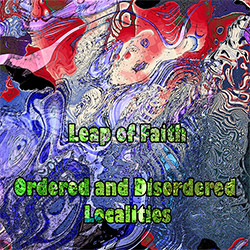

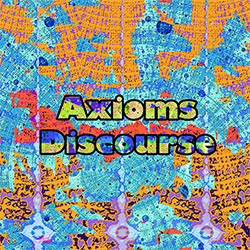
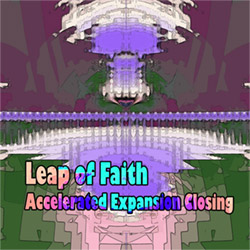
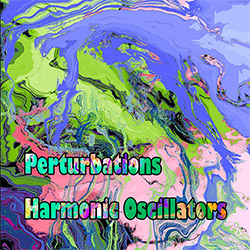
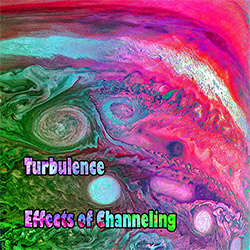

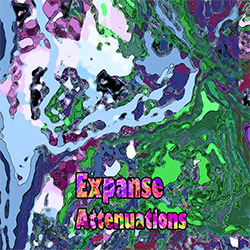


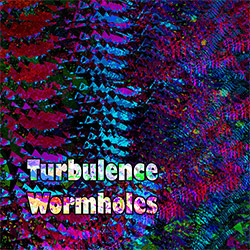
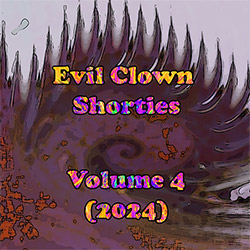



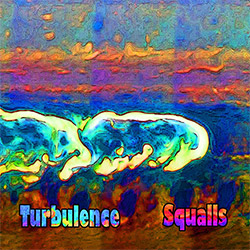

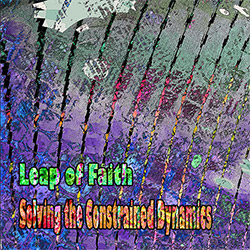
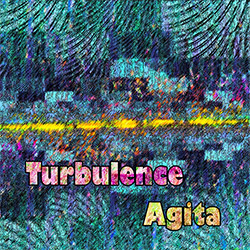


![Rodrigues, Ernesto / Nuno Torres / Guilherme Rodrigues: Whispers In The Moonlight - In Seven Movements [2CDs]](https://www.teuthida.com/productImages/misc4/35765.jpg)
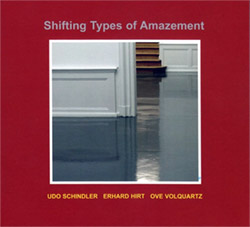

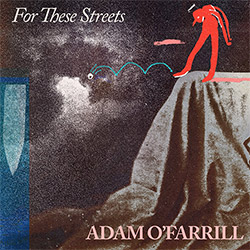
![Cocks, Laura: FATHM [VINYL]](https://www.teuthida.com/productImages/misc4/36055.jpg)
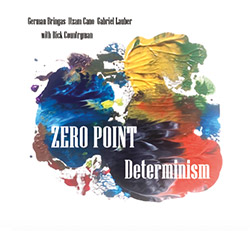
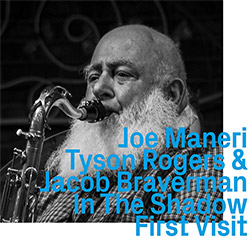
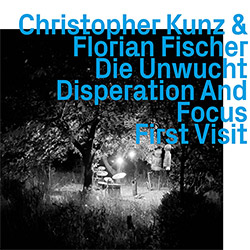
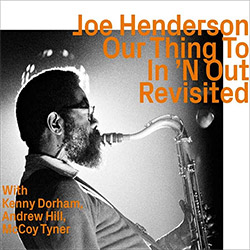

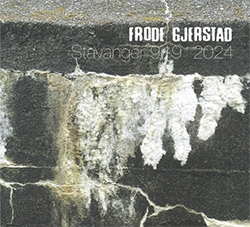
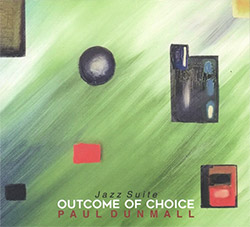
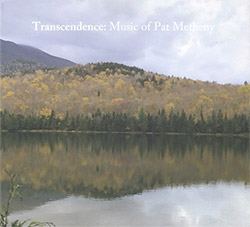
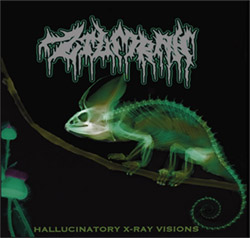
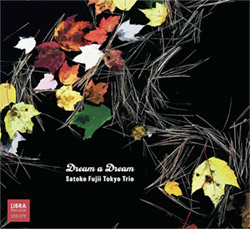
![Ackerley / Prymek / Turner: All Hope With Sleeping Minds [CASSETTE]](https://www.teuthida.com/productImages/misc4/35950.jpg)
![Myers, David Lee : Tin Drop Tear [BOOK w/ DOWNLOAD]](https://www.teuthida.com/productImages/misc4/36030.jpg)
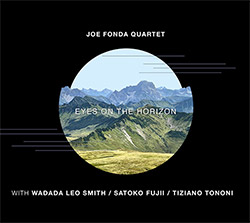
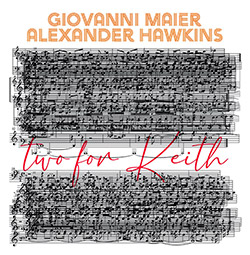
![Schindler, Udo / Sandy Ewen / Damon Smith: Munich Sound Studies Vols. 4, 5 & 6 [3 CDs]](https://www.teuthida.com/productImages/misc4/35966.jpg)
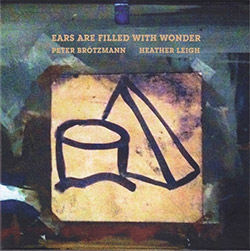


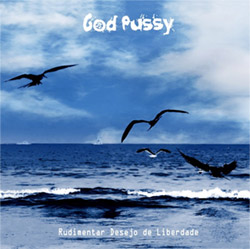


![Perelman, Ivo / Tyshawn Sorey: Paralell Aesthetics [2 CDs]](https://www.teuthida.com/productImages/misc4/35871.jpg)
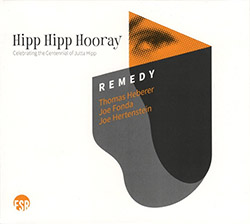

![Sjostrom, Harri: SoundScapes #4 Festival Berlin 2023 [3 CDs]](https://www.teuthida.com/productImages/misc4/35874.jpg)
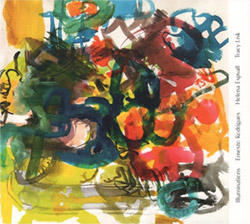


![Glenn, Jordan: Flustered [CASSETTE]](https://www.teuthida.com/productImages/misc4/35948.jpg)
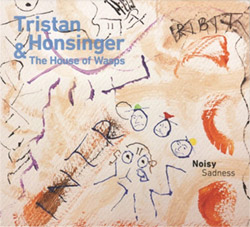
![Lindorff-Ellery, Evan: Church Recordings from Monhegan [CASSETTE]](https://www.teuthida.com/productImages/misc4/35949.jpg)
![Schindler, Udo / Werner Dafeldecker / Gunnar Geisse: Travelling Sound Images - Cognitive Transfers [Trio]](https://www.teuthida.com/productImages/misc4/35767.jpg)
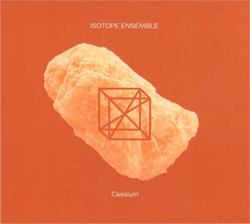
![Egberth, Dennis: The Dennis Egberth Dynasty [VINYL]](https://www.teuthida.com/productImages/misc4/35549.jpg)


![Schindler, Udo / Rieko Okuda / Eric Zwang Eriksson: Disturbed Terrains [2 CDs]](https://www.teuthida.com/productImages/misc4/35330.jpg)
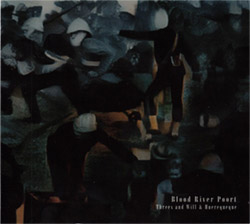
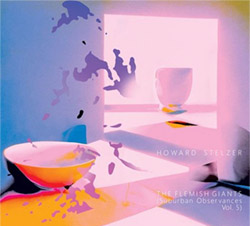
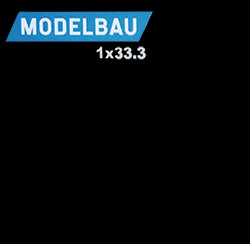
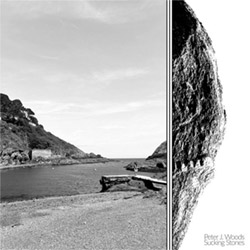
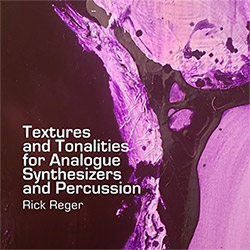

![Olencki, Weston : Pearls Ground Down To Powder [VINYL]](https://www.teuthida.com/productImages/misc4/35956.jpg)
![Myers, David Lee: Oculus [2CDs]](https://www.teuthida.com/productImages/misc4/35857.jpg)


![dustsceawung: dustsceawung [CASSETTE w/ Download]](https://www.teuthida.com/productImages/misc4/35753.jpg)
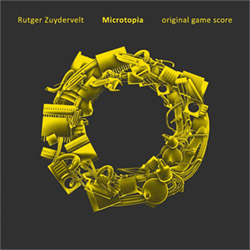



![Halls of the Machine: Atmospheres For Lovers And Sleepers [CASSETTE w/ DOWNLOAD]](https://www.teuthida.com/productImages/misc4/35806.jpg)
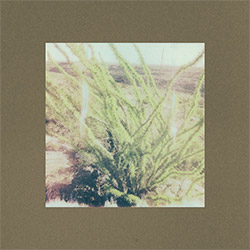
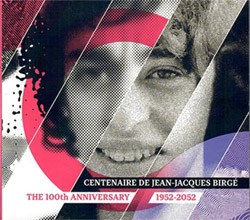
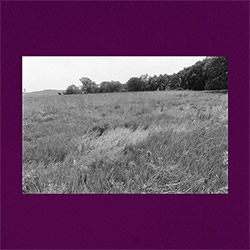
![AHC (Alexander Cooper): Lase [2 CDs]](https://www.teuthida.com/productImages/misc4/35754.jpg)



![Fagaschinski, Kai / Yan Jun : Graveyard Processions [VINYL w/ DOWNLOAD]](https://www.teuthida.com/productImages/misc4/35474.jpg)
![Brant, Cody / Carl Kruger: Smoke Detail [CASSETTE w/ DOWNLOAD]](https://www.teuthida.com/productImages/misc4/35551.jpg)








![Zorn, John / JACK Quartet: The Complete String Quartets [2 CDs]](https://www.teuthida.com/productImages/misc4/35609.jpg)

![Lonsdale, Eden: Dawnings [2 CDs]](https://www.teuthida.com/productImages/misc4/35480.jpg)







![Sanna, Claudio: Compositori Sardi Contemporanei II [2 CDs]](https://www.teuthida.com/productImages/misc4/35317.jpg)







![Zurria, Manuel: Fame di Vento [3 CDs]](https://www.teuthida.com/productImages/misc4/35167.jpg)

![Granberg, Magnus / Nattens Inbrott / Skogen: Holde Traume, Kehret Wieder! [2 CDs]](https://www.teuthida.com/productImages/misc4/35038.jpg)

![Electric Bird Noise / Derek Roddy: 8-10-22 [CD EP]](https://www.teuthida.com/productImages/misc4/35970.jpg)








![Elephant9 : Mythical River [VINYL]](https://www.teuthida.com/productImages/misc4/34624.jpg)



![Elephant9 with Terje Rypdal: Catching Fire [VINYL 2 LPs]](https://www.teuthida.com/productImages/misc4/35355.jpg)
![Deerlady (Obomsawin, Mali / Magdalena Abrego): Greatest Hits [VINYL]](https://www.teuthida.com/productImages/misc4/34876.jpg)







![Surplus 1980: Illusion of Consistency [CD]](https://www.teuthida.com/productImages/misc4/35069.jpg)
![Staiano, Moe: Away Towards the Light [VINYL + DOWNLOAD]](https://www.teuthida.com/productImages/misc4/35037.jpg)



![Caveira (Gomes / Sousa / Abras / Ferrandini): Ficar Vivo [VINYL]](https://www.teuthida.com/productImages/misc4/34643.jpg)
![Coley, Byron: Dating Tips for Touring Bands [VINYL]](https://www.teuthida.com/productImages/misc4/17906.jpg)

![Lost Kisses: My Life is Sad & Funny [DVD]](https://www.teuthida.com/productImages/misc4/lostKissesDVD.jpg)